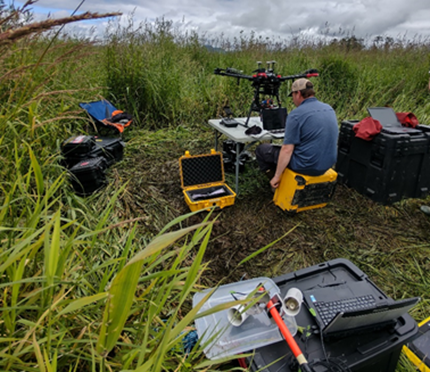Advances in Monitoring Restoration of Juvenile Salmon Habitat with Drones
Juvenile Pacific salmon rely on functioning wetlands for food and shelter as they migrate to the sea. In the Pacific Northwest, most wetland habitats have been lost or severely impacted, necessitating widespread restoration programs enacted to improve connectivity between water systems and reestablish native vegetation. Programs may include varied ecological engineering solutions, but all require monitoring to assess effectiveness. Until recently, assessments have lacked spatial and temporal resolution and have been time-consuming and expensive.
With funding and logistical support from the NOAA Oceanic and Atmospheric Research (OAR) Uncrewed Systems Research Transition Office (USRTO), scientists from the National Marine Fisheries Service (NMFS) have developed integrated remote sensing protocols using Uncrewed Aerial Vehicles (drones), advanced instrumentation, and image analysis methods that together facilitate a broad habitat assessment capability.
Advances in Monitoring Restoration of Juvenile Salmon Habitat with Drones Read More »

